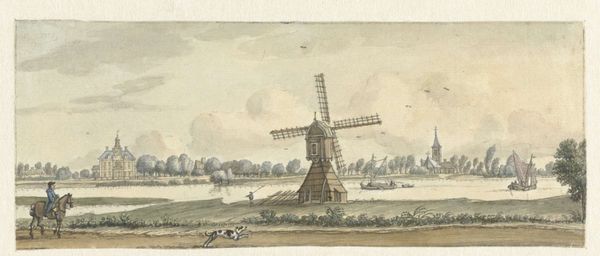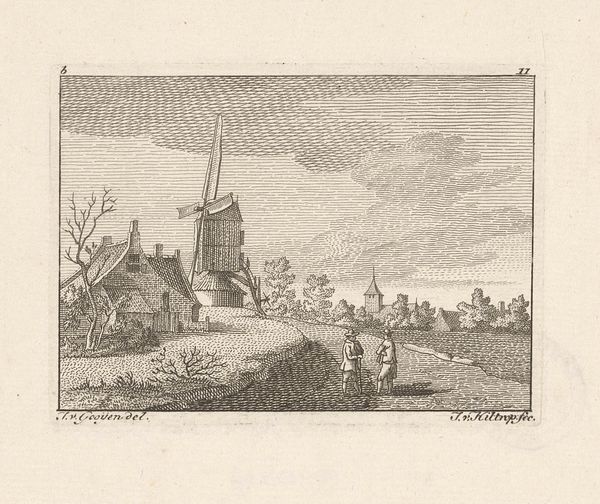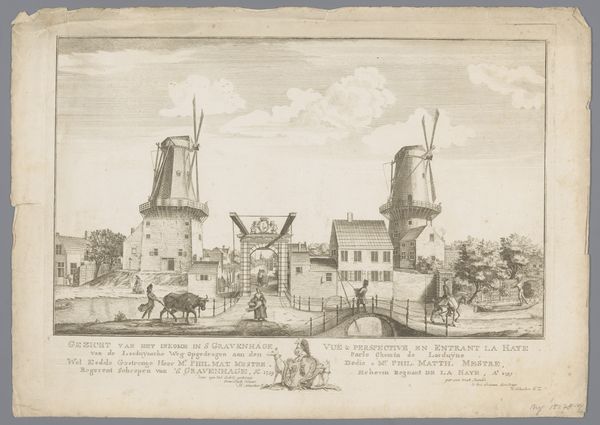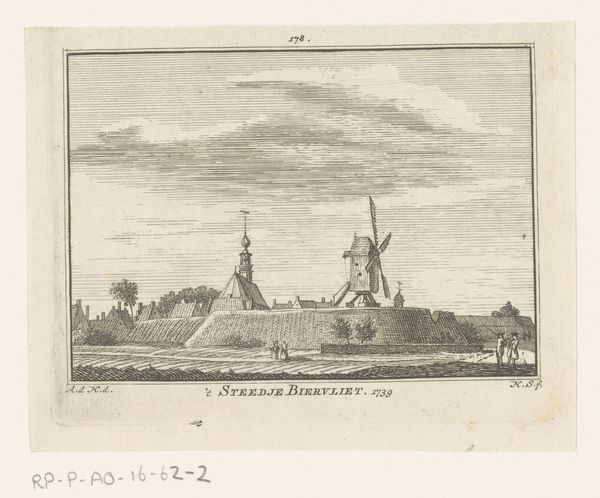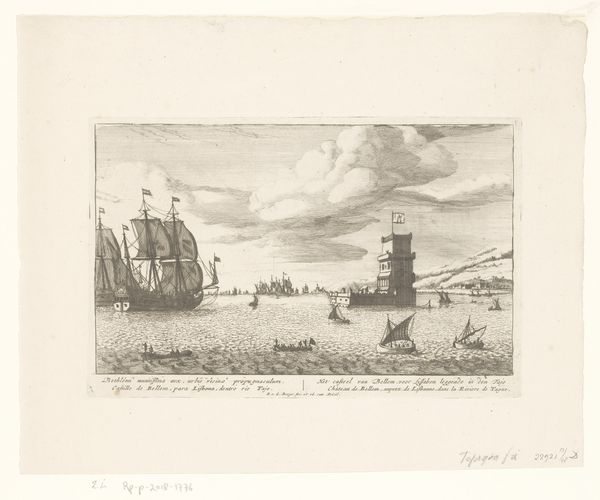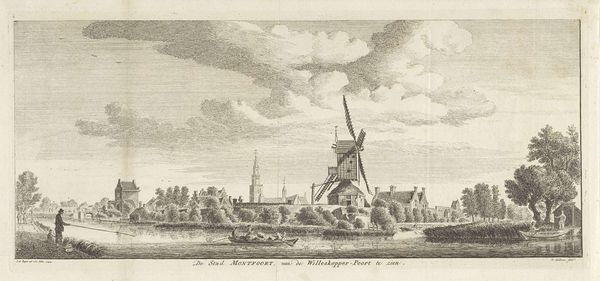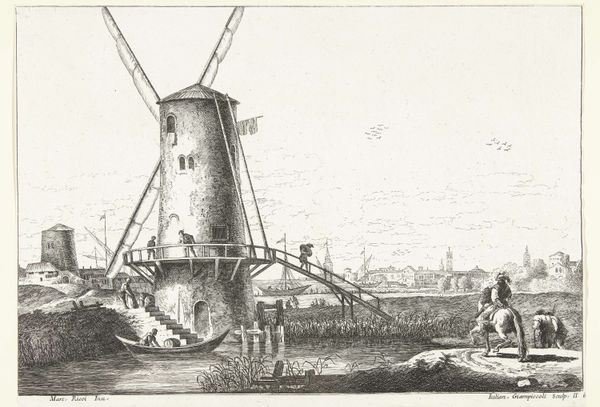
Ruïne van de molen te Gorinchem na de explosie, 1814 Possibly 1814
0:00
0:00
johannesvanhiltrop
Rijksmuseum
print, engraving
#
medieval
# print
#
old engraving style
#
landscape
#
cityscape
#
history-painting
#
engraving
#
realism
Dimensions: height 266 mm, width 296 mm
Copyright: Rijks Museum: Open Domain
Curator: Let's discuss this detailed engraving: “Ruïne van de molen te Gorinchem na de explosie, 1814,” or “Ruin of the windmill at Gorinchem after the explosion, 1814.” It’s attributed to Johannes van Hiltrop and captures a rather devastating scene. Editor: It certainly does. My initial reaction is that it's striking how delicate the linework is, especially considering the subject matter. The intricate details almost soften the impact of the ruin, if that makes sense. The material craft seems at odds with the scene of destruction, a compelling juxtaposition. Curator: I agree. The piece depicts the aftermath of a gunpowder explosion in Gorinchem. This event isn't just a local accident, but embedded in the broader context of the Napoleonic Wars and the struggle for Dutch independence. Gorinchem was a fortified city and this disaster, regardless of the precise cause, reflects that history. Editor: Absolutely, we're looking at the very real human cost embedded within these events. But let's not overlook how this type of print would have been circulated and consumed. Engravings like this served as early forms of news media. To capture and share these types of disaster events, the materiality of this image gives shape to how the public might understand a major event in 1814. Curator: Indeed. And note the placement of the mill outside the city walls. It literally and figuratively stood apart, making it a vulnerable site and, in this case, a tragic focal point. Also consider who would purchase these kinds of prints? Those interested in military matters? Those who suffered from a Dutch version of "war tourism"? Editor: I wonder about the process itself – the labour that went into creating the plate. It had to be significant, and done perhaps in partnership. This attention to detail—likely painstaking in nature—creates value that seems so separated from a disaster. How strange to have a moment captured, that almost feels divorced from reality due to its method of construction and consumption. Curator: Exactly. It reveals so much about not just the event, but about the production and the public for these images. It’s history laid bare by technique. Editor: Thinking about both social and artistic meaning of this engraving helps shed new light on Van Hiltrop's choice to render such a devastating scene.
Comments
No comments
Be the first to comment and join the conversation on the ultimate creative platform.



